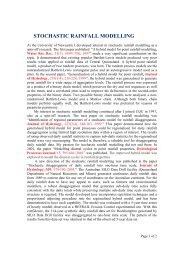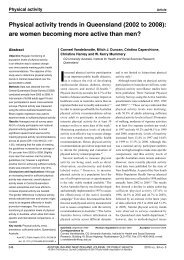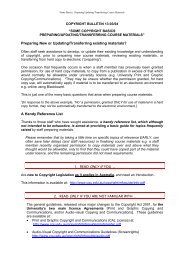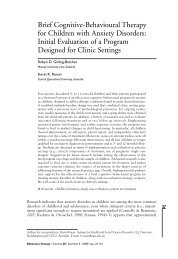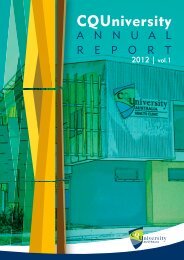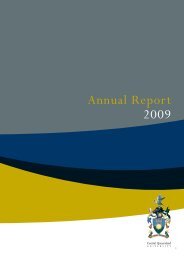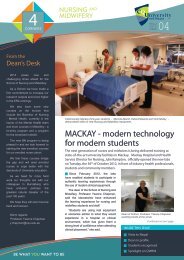2007 Annual Report - Central Queensland University
2007 Annual Report - Central Queensland University
2007 Annual Report - Central Queensland University
You also want an ePaper? Increase the reach of your titles
YUMPU automatically turns print PDFs into web optimized ePapers that Google loves.
<strong>2007</strong> Centre for Plant & Water Science <strong>Annual</strong> <strong>Report</strong>PHYTOCAPPING: AN EFFECTIVE TECHNIQUE FOR LANDFILLREMEDIATIONLandfills have been the major repositories of urban wastes, and they will continue to be built; solong as the humans live in communities. The costs of construction of landfills have beenescalating due to introduction of stringent environmental laws. Research is therefore required toidentify alternative techniques that will not only minimise the costs, but also demonstrateincreased environmental performance. An alternative landfill capping technique known as‘Phytocapping’ (establishment of plants on a layer of soil placed over the waste) was trialled atRockhampton, Australia. Twenty one tree species were grown for 3 years on two types ofphytocaps (thick cap; 1400 mm and thin cap; 700 mm; Fig. 1) and their growth, transpirationloss, canopy rainfall interception and methane oxidation were studied. The results show that thecanopy of the trees grown on the phytocaps intercepted, on an average, 30% of the rainfall thuspreventing a significant proportion of the rain water from entering the soil. The long-term sapflow monitoring data showed that the 2 to 3 year-old trees could remove 0.9 to 2.1 mm day -1 .The phytocaps were also found very effective in oxidising methane. The methane concentrationswere 4 to 5 times lower in phytocaps than in the adjacent non-vegetated landfill sites. TheHYDRUS 1D computer simulation model using 15 years of weather data and the plant and soilparameters collected from this trial revealed a percolation rate of 16.7 mm yr -1 in thick phytocapand 23.8 mm yr -1 in thin phytocap. These values are significantly lower than those expectedfrom compacted clay (78 mm yr -1 ; i.e., 10% of the rainfall). Overall, results of this studydemonstrate that the phytocaps are effective in limiting percolation of water into the waste atRockhampton which has a semi-arid climate. The trial also demonstrates the potential ofphytocaps to reduce landfill remediation costs while offering additional environmental benefits.Further research is currently being conducted to extend this novel method of landfillremediation to other agro-climatic regions of Australia(http://www.wmaa.com.au/aacap/aacap.html), with the view to providing scientific data toregulatory authorities to seek their approval to use phytocapping as an alternative technique forlandfill remediation.Figure 1. A closer view of the thick (left) and thin phytocaps (right) two years of plantingPROJECT STAFF Principal Investigators: Assoc. Prof. Nanjappa AshwathCo-investigators: K. Venkatraman and Dr N. SuFUNDING <strong>Central</strong> <strong>Queensland</strong> <strong>University</strong> post graduate scholarship38





